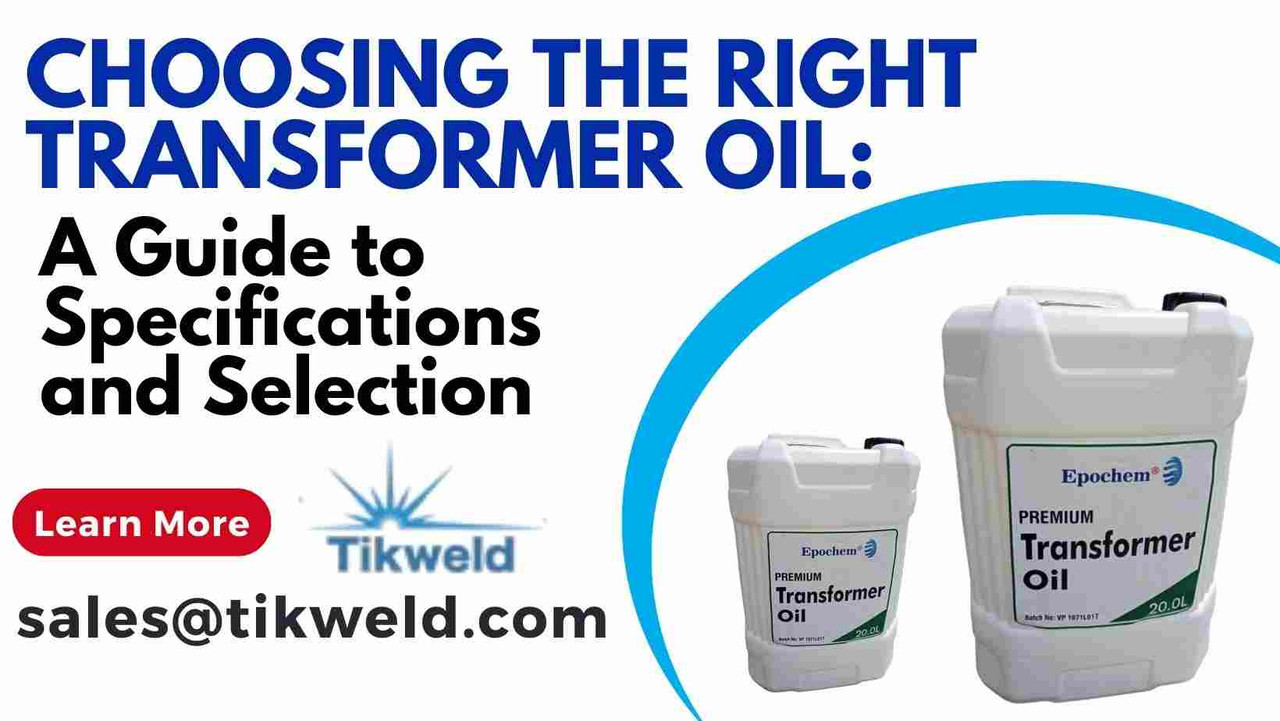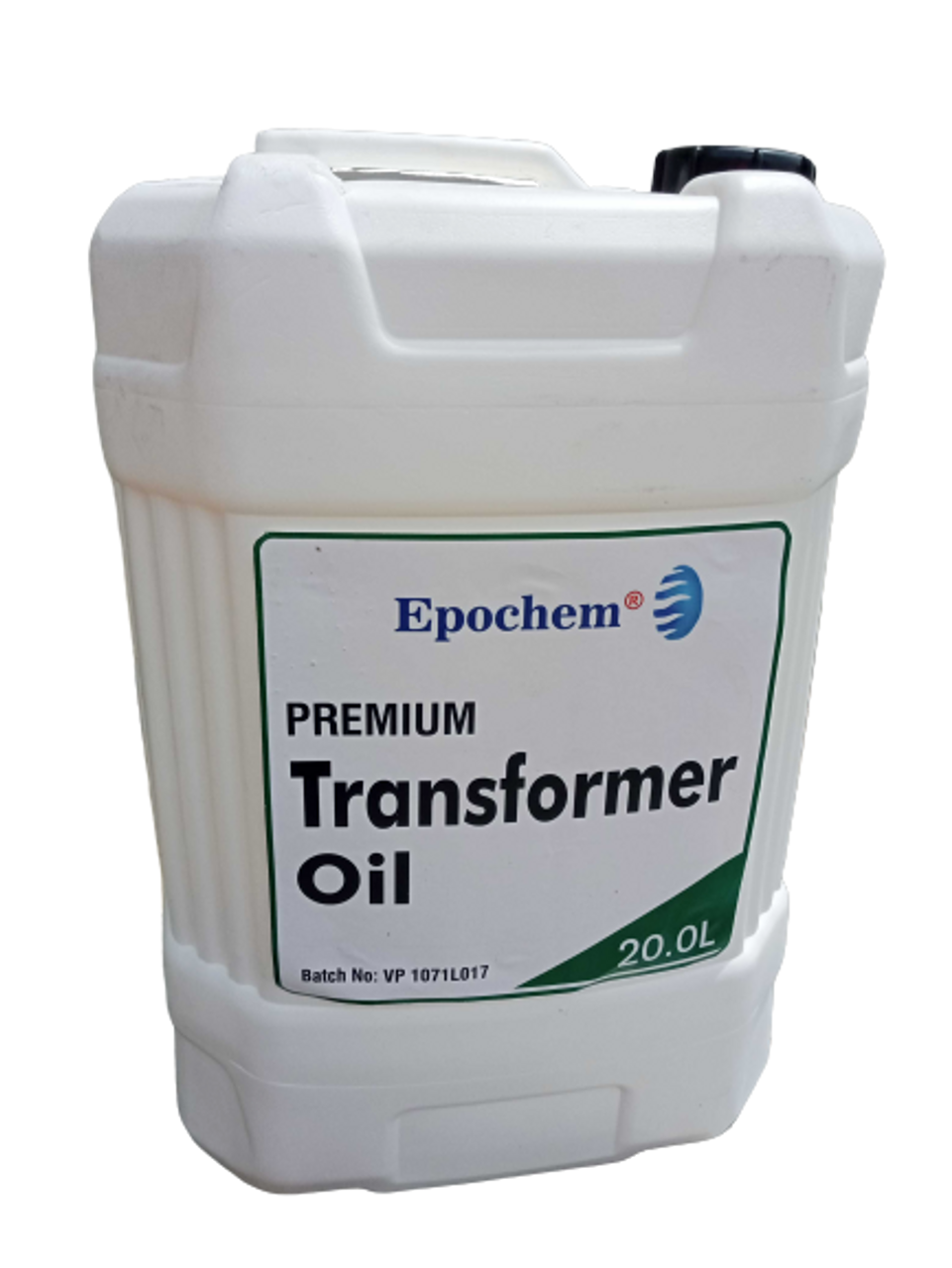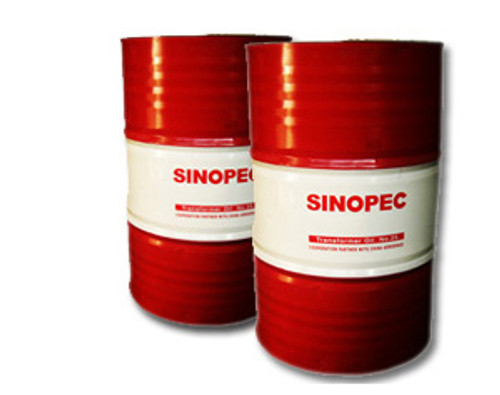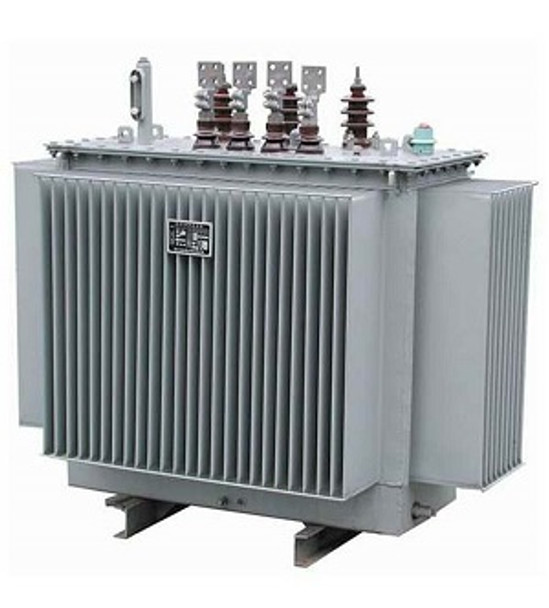Choosing the Right Transformer Oil: A Guide to Specifications and Selection
Introduction
Transformer oil, also known as insulating oil, plays a crucial role in the performance and reliability of transformers. Transformers are essential components of power distribution systems, responsible for stepping up or stepping down voltage levels to enable efficient electricity transmission. Choosing the right transformer oil is a critical task that directly impacts the performance, reliability, and longevity of transformers and enable them operate under varying load conditions while subjected to electrical and thermal stresses, we highly recommend Epochem transformer Oil.
Transformer oil serves multiple critical functions in transformers. Firstly, it acts as an electrical insulator, preventing electrical breakdown and ensuring the efficient and safe transfer of electrical energy. The oil provides insulation between the transformer's live parts, such as windings and core, and the grounded tank or enclosure.
Secondly, transformer oil serves as a coolant, dissipating heat generated during transformer operation. Transformers experience thermal stress due to the flow of electrical currents and energy losses in the core and windings. The oil circulates within the transformer, absorbing heat from the core and windings, and transfers it to the cooling surfaces, such as the tank walls or radiator fins. Efficient heat dissipation is crucial to maintain optimal operating temperatures and prevent insulation degradation. Additionally, transformer oil acts as a medium for controlling contaminants within the transformer. Over time, moisture, dust, and other impurities may enter the transformer and impact its performance. Transformer oil has the ability to absorb and suspend these contaminants, preventing them from accumulating on critical components and causing insulation breakdown or other operational issues.
This guide on specifications and selection of transformer oil provides comprehensive information and guidelines to aid in the selection process. We will delve into the key specifications and characteristics that need to be considered when choosing transformer oil. These include dielectric strength and insulation properties, thermal conductivity and cooling capabilities, oxidation stability and aging characteristics, viscosity and flow characteristics, moisture resistance, and compatibility with insulation materials. Understanding these specifications is vital to ensure that the selected oil meets the specific requirements of the transformer and its operating conditions.
Epochem Transformer Oil
Key Takeaway
-
Transformer oil is essential for electrical insulation, heat dissipation, and contaminant control within transformers, directly impacting their performance, safety, and lifespan.
-
Choosing the right transformer oil enhances transformer efficiency, prevents electrical breakdown, and supports stable operation under thermal and electrical stress.
-
Dielectric strength is a critical property, ensuring proper insulation between energized components and reducing the risk of short circuits or equipment failure.
Understanding Transformer Oil
Transformer oil, also referred to as insulating oil, is a specialized type of oil that is specifically designed to serve as an insulator and coolant within electrical transformers. It is a highly refined mineral oil that undergoes various purification processes to enhance its dielectric and thermal properties. The primary purpose of transformer oil is to provide insulation and dissipate heat, ensuring the safe and efficient operation of transformers.
Transformer oil acts as an electrical insulator, preventing electrical breakdown and maintaining the required insulation levels between the various components of a transformer. It isolates the live parts, such as windings and core, from the grounded tank or enclosure, thus allowing electrical energy to flow without interruption or leakage. This insulation property is vital for preventing short circuits and ensuring the overall safety and reliability of the transformer.
Functions and role of transformer oil in transformers
Transformer oil serves multiple essential functions within transformers, contributing to their optimal performance and longevity. These include;
Electrical insulation:
One of the primary functions of transformer oil is to provide electrical insulation between the high-voltage and low-voltage components of a transformer. By preventing electrical arcing or breakdown, it ensures the safe transfer of electrical energy and minimizes the risk of damage to the transformer.
Heat dissipation:
Transformers generate heat during operation due to energy losses and electrical resistance. Transformer oil serves as a coolant, absorbing this heat from the core and windings and dissipating it to the surrounding environment. Effective heat dissipation helps maintain the transformer's temperature within acceptable limits, preventing overheating and ensuring efficient operation.
Contaminant control:
Transformer oil plays a crucial role in managing contaminants within the transformer. It acts as a medium for suspending and absorbing impurities such as moisture, dust, and particulate matter that may enter the transformer. By keeping these contaminants in check, transformer oil helps preserve the insulation properties of the transformer and prevents the accumulation of harmful deposits on critical components.
Buy Sinopec Transformer Oil 200 Liters Drums in Nigeria
Importance of selecting the right transformer oil
Selecting the appropriate transformer oil is of paramount importance to ensure optimal transformer performance and longevity. The right choice of transformer oil can significantly impact the efficiency, reliability, and lifespan of a transformer. Several factors contribute to the importance of selecting the right transformer oil:
Insulation performance:
High quality transformer oil such as Epochem transformer oil features a high dielectric strength and excellent insulation properties ensures effective electrical insulation between the transformer's components. This reduces the risk of electrical breakdown and enhances the transformer's overall insulation performance.
Heat transfer capabilities:
The thermal conductivity of transformer oil directly affects its ability to dissipate heat. Selecting a transformer oil with high thermal conductivity helps to efficiently transfer heat away from the core and windings, maintaining the transformer's operating temperature within acceptable limits.
Long-term stability:
Transformer oil should possess good oxidation stability and aging characteristics. Oxidation stability ensures that the oil can withstand the effects of oxygen exposure over time, minimizing the formation of harmful by-products and preserving its performance. Aging characteristics relate to the oil's ability to maintain its properties and performance over an extended operational lifespan.
Compatibility with materials:
Transformer oil should be compatible with the various materials used in transformers, such as insulation materials, seals, gaskets, and paint coatings. Compatibility ensures that the oil does not adversely interact with these materials, preventing degradation or damage to the transformer.
By selecting the right transformer oil, operators can enhance the efficiency and reliability of transformers, reduce the risk of failures or breakdowns, and extend the operational life of the equipment. It is crucial to consider factors such as dielectric strength, thermal conductivity, oxidation stability, aging characteristics, and compatibility when choosing transformer oil to ensure optimal transformer performance and mitigate risks associated with electrical insulation, heat dissipation, and contaminant control.
Transformer oil is used for Transformer
Factors to Consider in Transformer Oil Selection
Transformer type and rating:
Different types of transformers, such as power transformers, distribution transformers, or instrument transformers, may have varying requirements for transformer oil. The oil's dielectric strength, cooling properties, and other specifications may need to align with the transformer type and rating. Consideration should be given to factors such as the transformer's voltage class, power capacity, load requirements, and design specifications when selecting transformer oil.
Operating conditions and environmental factors:
Transformer oil selection should take into account the operating conditions and environmental factors to ensure optimal performance and longevity. Factors such as ambient temperature, altitude, humidity, and exposure to contaminants or pollutants can affect the oil's performance. For example, transformers operating in extreme temperature conditions may require transformer oil with enhanced thermal stability or low-temperature viscosity characteristics.
Cost considerations:
Cost is an important factor to consider when selecting transformer oil. While it is essential to prioritize the quality and performance of the oil, it is also necessary to assess the cost-effectiveness of different options. Factors such as the initial cost, maintenance requirements, and expected lifespan of the transformer oil should be evaluated to make an informed decision.
Long-term performance and maintenance requirements:
Transformer oil is a critical component in ensuring the long-term performance and reliability of transformers. Consideration should be given to the oil's stability, aging characteristics, and maintenance requirements. Transformer oil that offers good oxidation stability, low sludge formation, and extended service life can help reduce maintenance needs and enhance the overall performance of the transformer over its operational lifespan.
By carefully considering industry standards, compliance with local regulations, and the aforementioned factors during the transformer oil selection process, operators and engineers can make informed decisions that align with the specific requirements of the transformer, the operating.
Types of Transformer Oil
Transformer oils are available in various types, each with its own unique properties and characteristics. The choice of transformer oil type depends on the specific requirements of the transformer, its application, and any specific environmental considerations. Let's explore the different types of transformer oils:
Mineral oil:
Mineral oil is the most commonly used type of transformer oil. It is derived from petroleum and undergoes extensive refining processes to remove impurities and enhance its dielectric and cooling properties. Mineral oil offers good electrical insulation capabilities, effective heat dissipation, and cost-effectiveness. It is widely available and meets the requirements of most transformers. However, mineral oil has certain limitations, such as a relatively low flash point and limited biodegradability, which should be considered in certain applications.
Silicone oil:
Silicone oil, also known as silicone-based transformer oil, is a synthetic oil that consists of silicon-based compounds. It offers several advantages over mineral oil, including a wider temperature range, higher flash and fire points, and excellent thermal stability. Silicone oil has better oxidation resistance and longer service life compared to mineral oil. It also exhibits higher dielectric strength and lower viscosity at low temperatures. Silicone oil is commonly used in transformers that operate under extreme temperature conditions, such as those found in high-altitude locations or in industrial processes where high temperatures are present.
Bio-based oil:
Bio-based transformer oil is a type of environmentally friendly oil made from renewable resources, such as vegetable oils or esters derived from plant-based feedstocks. It offers a sustainable alternative to mineral oil and has gained popularity due to its biodegradability and reduced environmental impact. Bio-based oils often have excellent dielectric properties, high flash and fire points, and good thermal stability. They are suitable for applications where environmental considerations are crucial, such as in sensitive ecosystems, environmentally protected areas, or where spillage or leakage may pose environmental risks.
Transformer Oil Comparison Table
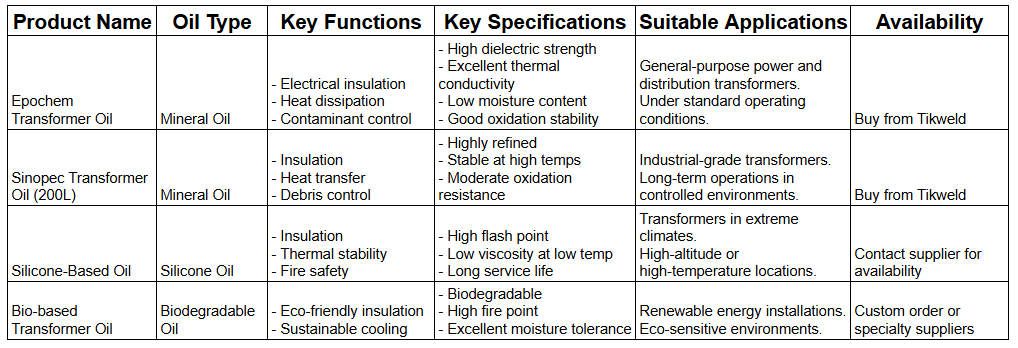
Key Specifications for Transformer Oil
Choosing the right transformer oil requires careful consideration of various key specifications. These specifications directly impact the performance, reliability, and longevity of transformers. Let's delve into each of these specifications in detail:
Dielectric strength and insulation properties:
Dielectric strength refers to the ability of transformer oil to withstand electrical stress without breaking down. It is measured in kilovolts per unit thickness. High dielectric strength is crucial for maintaining effective insulation between different electrical components within the transformer, preventing electrical arcing and breakdown. The dielectric strength of transformer oil ensures the safe transfer of electrical energy and minimizes the risk of electrical failures.
Thermal conductivity and cooling capabilities:
Thermal conductivity is the measure of a substance's ability to conduct heat. In transformers, efficient heat dissipation is essential to prevent overheating and ensure optimal performance. Transformer oil with high thermal conductivity effectively absorbs heat generated within the transformer's core and windings and transfers it to cooling surfaces such as the tank walls or radiator fins. This property helps maintain the transformer's temperature within acceptable limits, preventing insulation degradation and ensuring efficient operation.
Oxidation stability and aging characteristics:
Oxidation stability refers to the oil's resistance to oxidation, which occurs when the oil reacts with oxygen in the presence of heat. Oxidation can lead to the formation of sludge, acids, and other harmful by-products that can degrade the oil's performance and compromise the transformer's insulation. Transformer oil with good oxidation stability resists the formation of these harmful by-products, ensuring the oil's longevity and preserving its insulation properties over time. Additionally, the oil's aging characteristics refer to its ability to maintain its properties and performance throughout its operational lifespan.
Viscosity and flow characteristics:
Viscosity is a measure of the oil's resistance to flow. Transformer oil should have an appropriate viscosity to ensure optimal circulation within the transformer, facilitating efficient heat transfer and cooling. The viscosity of the oil should be carefully selected based on the transformer's design, operating conditions, and environmental factors. It should be low enough to allow easy flow through narrow gaps and channels, but high enough to provide adequate lubrication to moving parts.
Moisture resistance and water content:
Moisture resistance is a crucial property of transformer oil, as moisture can adversely affect the insulation performance and cause electrical breakdown. Transformer oil should have low moisture absorption characteristics and maintain a minimal water content. Moisture can enter the transformer through various sources such as humidity, condensation, or water ingress. Transformer oil with good moisture resistance helps preserve the insulation properties of the transformer, preventing the degradation of electrical performance and minimizing the risk of failures.
Compatibility with insulation materials:
Transformer oil should be compatible with the various insulation materials used in transformers, such as paper, cellulose, varnishes, and coatings. Compatibility ensures that the oil does not adversely interact with these materials, leading to degradation, corrosion, or other detrimental effects. Compatibility is crucial for maintaining the integrity of the insulation system, preventing the loss of dielectric strength, and ensuring long-term performance and reliability of the transformer.
Considering these key specifications during the selection process ensures that the chosen transformer oil meets the specific requirements of the transformer, its operating conditions, and the desired performance objectives. Each specification plays a vital role in maintaining efficient electrical insulation, effective heat dissipation, resistance to degradation, proper flow characteristics, moisture control, and compatibility with insulation materials. A comprehensive understanding of these specifications empowers operators and engineers to make informed decisions in selecting the most suitable transformer oil for their specific applications.
Testing and Evaluation for Transformer Oil
Regular testing and analysis of transformer oil are essential for ensuring the ongoing performance and reliability of transformers. Oil testing helps assess the condition of the oil and provides insights into the health of the transformer. It allows for the early detection of potential issues or abnormalities, enabling proactive maintenance and preventing costly failures. Oil testing also helps monitor the effectiveness of maintenance practices and verifies the compliance of the oil with specified standards and specifications.
Methods for assessing transformer oil quality:
There are several methods for assessing the quality of transformer oil. These methods include:
Dissolved Gas Analysis (DGA):
DGA involves analyzing the gases dissolved in the transformer oil. The presence and concentration of specific gases can indicate various types of faults or abnormalities within the transformer, such as overheating, arcing, or insulation breakdown.
Dielectric Breakdown Voltage Test:
This test measures the voltage at which the oil's dielectric strength breaks down. It helps assess the oil's ability to withstand electrical stress without breakdown and provides an indication of its insulation performance.
Moisture Content Analysis:
Moisture content analysis determines the water content in the transformer oil. Excessive moisture can lead to insulation degradation and decrease the dielectric strength of the oil. Moisture content analysis helps identify the need for drying or dehydration of the transformer.
Acid Number Test:
The acid number test measures the level of acidity in the transformer oil. Increased acidity can be an indicator of oil degradation or contamination. Monitoring the acid number helps assess the oil's stability and identifies the need for oil replacement or regeneration.
Oxidation Stability Test:
The oxidation stability test evaluates the oil's resistance to oxidation. It measures the formation of sludge, acids, and other by-products that can degrade the oil's performance. Oxidation stability testing helps determine the oil's remaining useful life and the need for preventive maintenance.
The evaluation of oil samples and test results is crucial for interpreting the condition of the transformer oil and identifying any potential issues. Qualified professionals analyze the test data and compare the results against industry standards and established thresholds. Deviations from expected values or significant changes over time can indicate the presence of problems or deteriorating conditions. Evaluating oil samples and test results helps make informed decisions regarding maintenance actions, such as oil treatment, replacement, or further investigations.
Best Practices for Transformer Oil Selection
Consulting experts and industry resources:
When selecting transformer oil, it is advisable to consult with experts in the field, such as transformer manufacturers, oil suppliers, or industry professionals. They can provide valuable insights, technical expertise, and guidance based on their experience and knowledge. Additionally, industry resources, such as technical publications, standards, and guidelines, can offer valuable information and best practices for transformer oil selection.
Assessing supplier reputation and track record:
Choosing a reliable and reputable supplier is crucial for obtaining high-quality transformer oil. It is essential to evaluate the supplier's reputation, track record, and certifications. A reputable supplier should have a history of providing reliable products and meeting industry standards. Supplier evaluations can involve assessing their manufacturing processes, quality control measures, and adherence to environmental regulations.
Conducting risk assessments and cost-benefit analyses:
Performing risk assessments and cost-benefit analyses helps in making well-informed decisions regarding transformer oil selection. Assessing the risks associated with different oil types, considering factors such as safety, environmental impact, and performance, helps identify potential vulnerabilities and select appropriate mitigations. Cost-benefit analyses evaluate the overall economic impact of different oil options, taking into account factors such as initial costs, maintenance requirements, lifespan, and performance benefits.
Documenting selection process and rationale:
It is important to document the transformer oil selection process, including the considerations, evaluations, and decisions made. This documentation serves as a reference for future maintenance activities, troubleshooting, or replacement processes. It also provides a record of the rationale behind the oil selection, helping to justify the choices made and facilitating transparency and accountability in the decision-making process.
By following these best practices, organizations can make informed decisions when selecting transformer oil, ensuring the optimal performance, longevity, and reliability of their transformers.
Conclusion
Choosing the right transformer oil is more than a technical decision it’s a strategic investment in the performance, reliability, and longevity of your power equipment. Understanding its vital functions, evaluating key specifications, and adhering to industry standards empower operators to make informed choices that enhance transformer efficiency and ensure dependable power distribution.
Proper selection and routine maintenance of transformer oil are essential steps in safeguarding critical infrastructure and supporting the continuous flow of electricity to power today’s demands and tomorrow’s growth. Ready to improve the reliability of your transformers? Choose Epochem Transformer Oil — trusted for superior insulation, thermal stability, and long-term performance. Visit Tikweld Welding Supplies to place your order or learn more.

